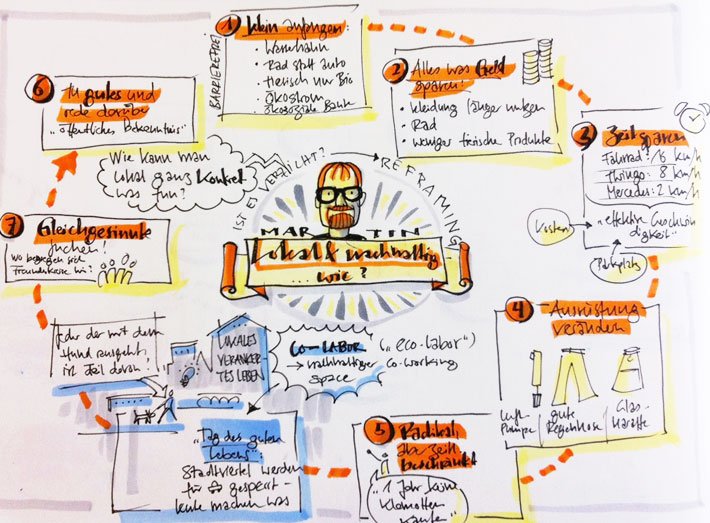Learn Sketchnoting with bikablo - Part 1: What does a Sketchnoter Do?
Courtesy of: Martin Haussmann, bikablo
How can content be better learned? This is a question that many people who depend on acquiring and imparting complex knowledge ask themselves. Capturing and sharing nuggets of knowledge better with the creative technique of sketchnoting is a great passion of the bikablo akademie.
Sketchnoting - what is that?
You know how it goes: after a long strategy meeting or an in-depth technical conversation, your head is spinning. Not much of the lengthy PowerPoint presentation has stuck in your brain – except that there were a lot of bullet points. And when you glance through your notes later, you realize you didn't really jot down much of the information.
Before, I used to always catch myself in meetings or lectures doodling little people and patterns onto the corners of my notebook. Today, I still love to do this, but I do so strategically: the sketchnoting technique helps me to understand information, to remember it, and to be able to share it with others – and it's a lot of fun!
How does sketchnoting work?
With sketchnoting, you record information by using text, graphics, and images. Ideally, this lets you create “knowledge maps” that help you to make what you've heard more concrete for yourself. The advantage: it's not only easier to find the information again, but it's a lot more fun to look at it in these drawings. And, in the future, you can use them to help you remember what you've learned. The reason this works is because your visual notes help link what you've already learned in a real-time setting to your brain's neural network. This also works if you want to learn information through reference books or video tutorials.
Want to learn how to sketchnote? Join my for one of my upcoming Thought Sketching workshops and in 90 minutes you will learn some simple ways to get started with this visualization technique.
Learn how to practice your first sketchnote, by reading the blog post ‘'Learn Sketchnoting with bikablo - Part 2: My First Sketchnote in Five Steps”.


